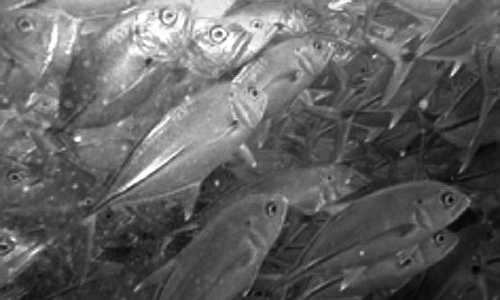
IN the 1970’s, we went scuba diving so often.
To ensure our safety during our diving escapades, we used equipment called ‘buoyancy compensators’, also often called ‘stab jackets’. These establish neutral buoyancy underwater and positive buoyancy on the surface, thus the need to inflate them.
They look like simpler versions of those life vests used in airplanes these days.
Who wouldn’t love the seas?
There is nothing more soothing than the sound of the waves and the way each wave replenishes itself as it caresses the shore during high tide. The gentle sea breeze has its therapeutic effect on us, as it not only cleanses our lungs but it also clears our mind and heals our souls.
While diving, it was a real treat to measure coral growth and document the bounty of our reefs! We would marvel at marine snails called ‘golden cowries’ as well as cone shells and Nautilus shells, among others.
Cone shells are undeniably popular among shell collectors. Golden cowries live under the rocks and at night, they feed on algae. These are usually used in arts, jewels and as religious symbols.
The Nautilus shells even inspired famed poet Oliver Wendell Holmes to write a poem titled “The Chambered Nautilus”. These are actually sea animals whose shells are sources of the Osmeña pearl (which is actually not a genuine pearl but a jewelry product sourced from the innermost, pearlescent blue-gray part of the Nautilus shells). Over-fishing of these shells stems from the fact that they are used as pearl substitutes.
We had witnessed how these sea animals were killed and sold. Biologist Peter Ward, from the University of Washington, expressed the same appalled reaction when he wrote that “there is a horrendous slaughter going on out there.”
Being in the center of the Coral Triangle, our country’s marine environment then was much richer. Our coral reefs covered over 22,000 sq. kms. -- larger than the coastline of continental USA.
Yes, in terms of coral reefs, we were even richer than the famed Great Barrier Reef in Australia!
The Philippine coral reefs is Asia’s 2nd largest.
However, today it is no longer the same.
During the recent State of the Nature Address (SONA) at Miriam College, Biodiversity Management Bureau’s Director, Dr. Mundita Lim, presented figures that confirmed a disappointing news: only one percent of our country’s coral reefs now remain in excellent condition. (This is a fast decline compared to a 2007 data of Reef Check, the world’s largest reef conservation organization, stating five percent).
All these damages occurred in less than 50 years! This must stop, or else we can expect a threatened future of our natural resources in the next 50 years.
Strangely enough, so little is known about the seas and their bounty. They make up over 70 percent of the earth’s surface and absorb more than 50 percent of atmospheric carbon dioxide.
For more than forty years now, we have strongly advocated for sea protection alongside other environmental concerns. The marine environment is our home, where the marine food chain starts. It is the beginning of life.
The gyres and dead zones have expanded. Therefore, expanding marine protected areas is a must.
In Washington D.C. in early 1980s, we had strongly lobbied for the banning of the importation of Philippine corals. It was the height of a 20-year international trade when there was a demand for coral skeletons used for decorative purposes. Half of the trade originated from our country. Imagine the resistance we met as we called for the ban! Yet, we were undaunted.
We used the President Ferdinand E. Marcos’ Presidential Decree 1219, (banning the harvesting of coral) and with the help of Tom Garrett of the Animal Welfare Institute and Senator Warren Magnuson, it was amended into the U.S. Black Bass and Lacey Acts. We were ecstatic! However, with the recent data presented to us by Dr. Lim, I am saddened that our efforts seem to be in vain now.
After Typhoon Glenda, we expected nature to have taken its toll on the reefs as it did on land. In our recent dive, we were delighted to see the corals intact! The reefs stood their ground! After all, they are coral colonies made to take nature’s wrath.
What reefs could not withstand are the damages done by acidification and unregulated eco-tourism.
Lim added that our forests as well had taken a beating. From over 22 million hectares of pristine virgin forests around our country, these had decreased to less than 500,000 hectares. Our river systems and mangrove also suffered the same fate.
With the Conference of Parties (COP 20) nearing, we expect nothing binding on its agenda, as usual. For one, how can their aimless talks help us against unpredictable typhoons more ferocious than super typhoon Yolanda? How come carbon dioxide continues breaching over the 400ppm threshold?
We whole heardly oppose all their talks about carbon trading and about (Carbon) Clean Development Mechanisms (CDMs)! Why? Because instead of talking about global pollution and who must be held accountable, CDMs tend to justify the present (economic) development model by passing the buck to ‘fallguys’ rather than the culprits themselves.
We must restore our biodiversity, our habitats and ecosystems. WE MUST BE SELF-SUFFICIENT. WE MUST PROTECT OUR CARBON SINKS AND STEP ON THE BRAKES ON EMISSIONS.
As an island-archipelago we must have our islands self-sufficient with clean and renewable energy. This is a doable answer that will mitigate greenhouse gases (GHG) and combat climate change, without a doubt. Once achieved, then we can rest our minds that we had done our share.
The seas are our LAST FRONTIER. Their destruction will lead to eventual demise of civilization.
(By: Antonio M. Claparols – President ESP)
